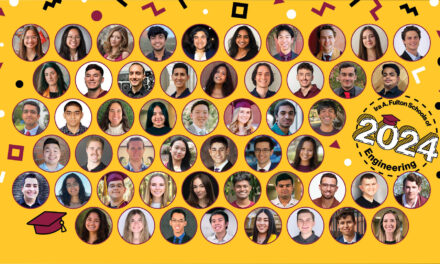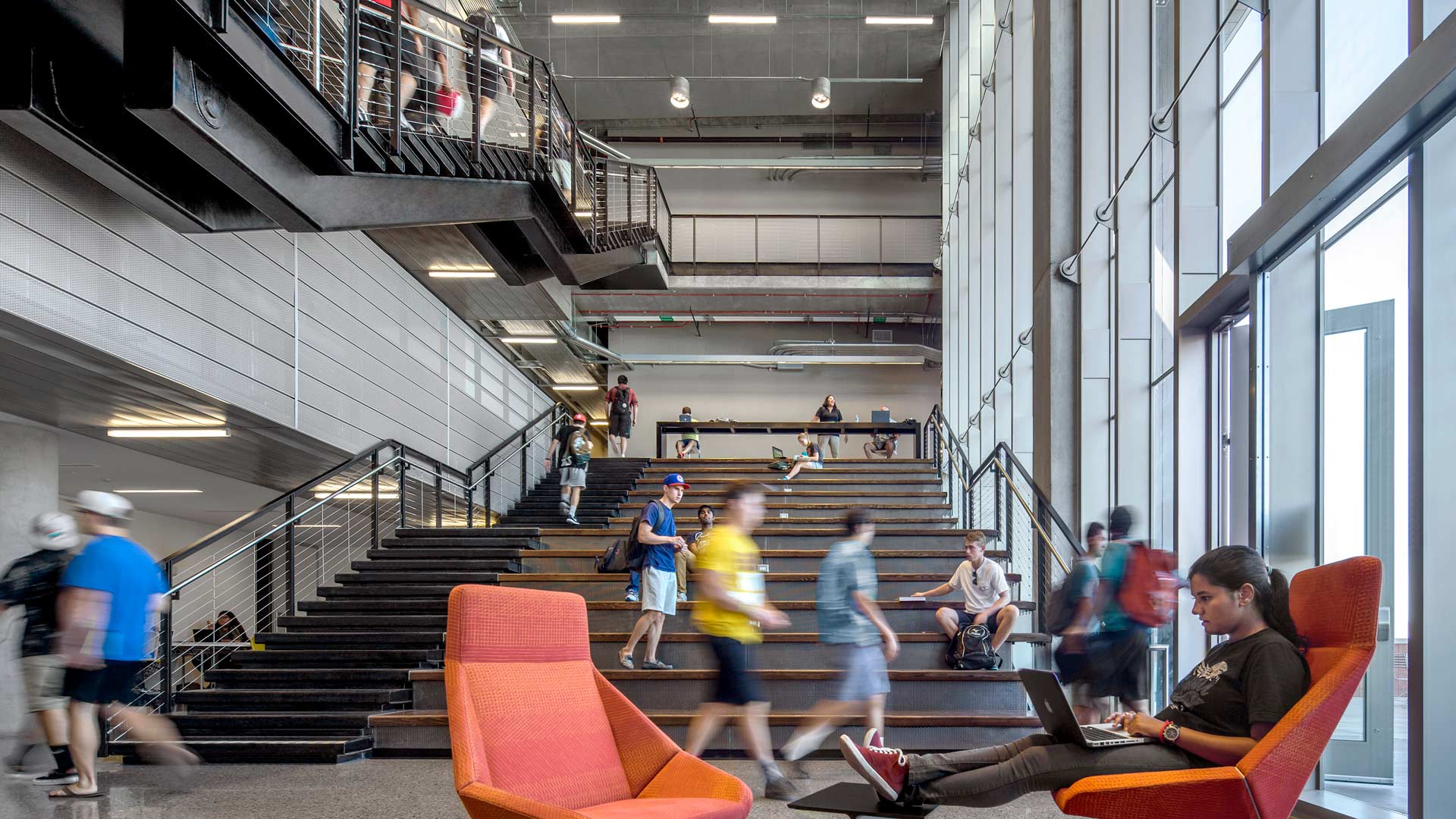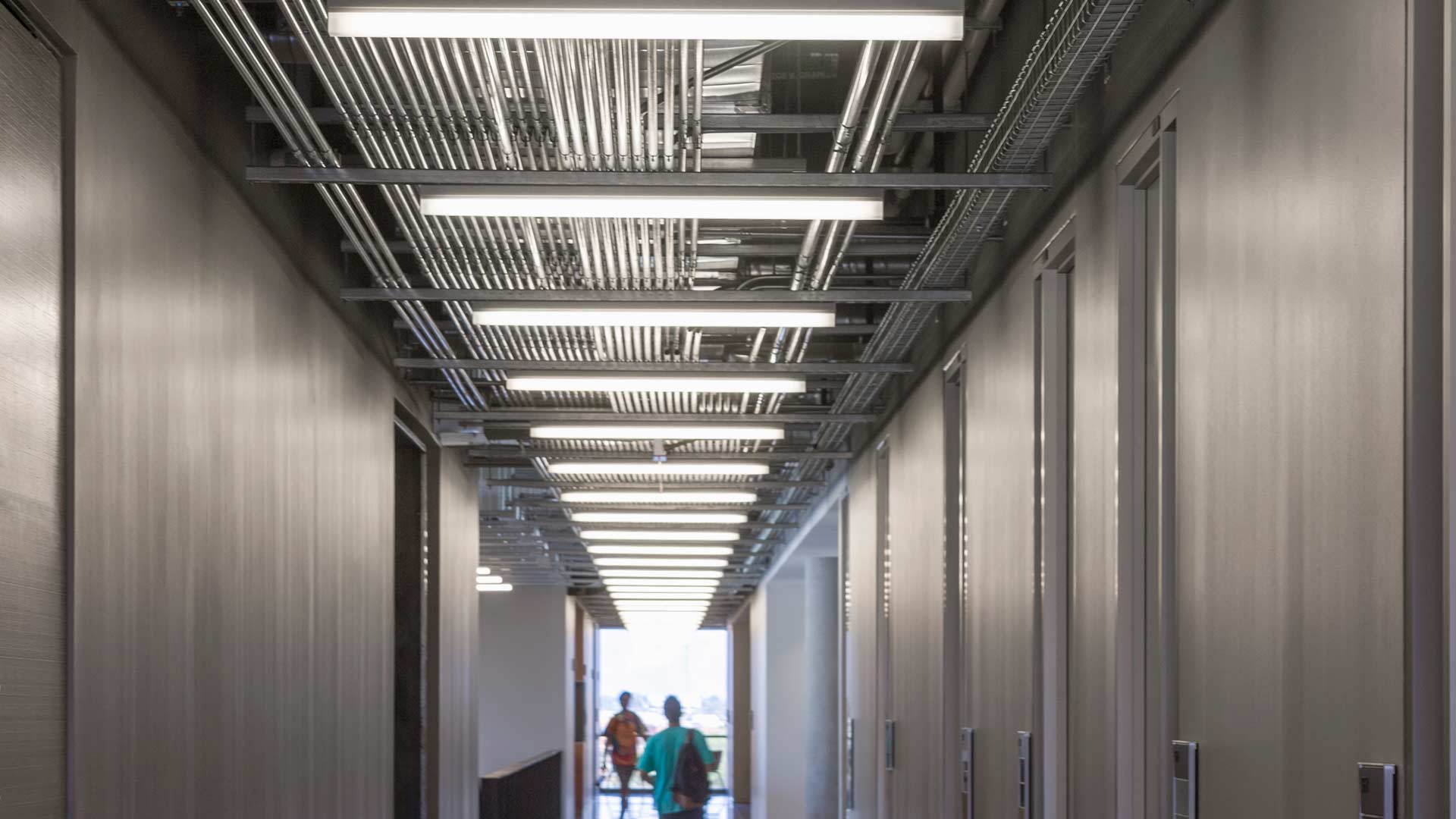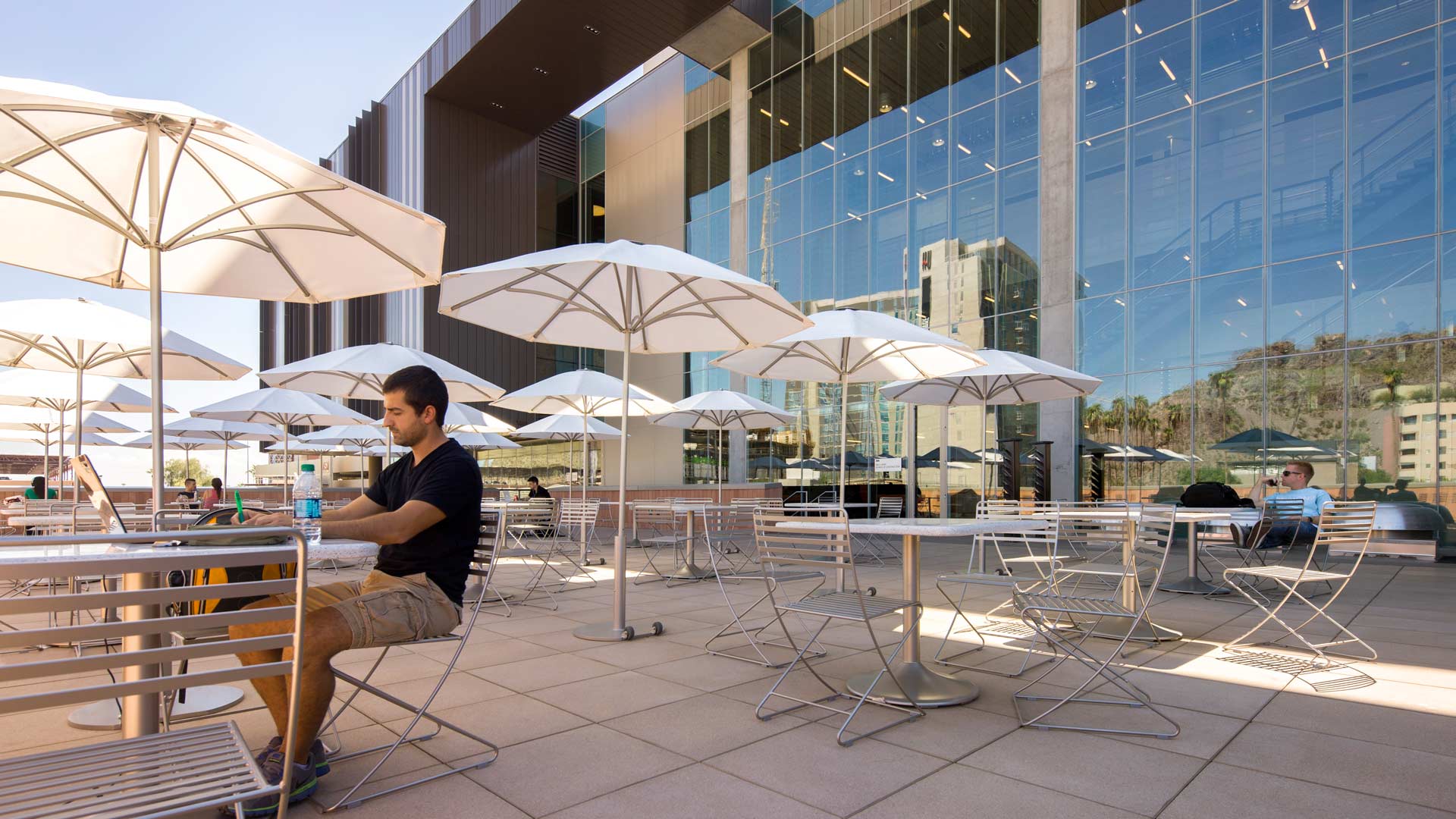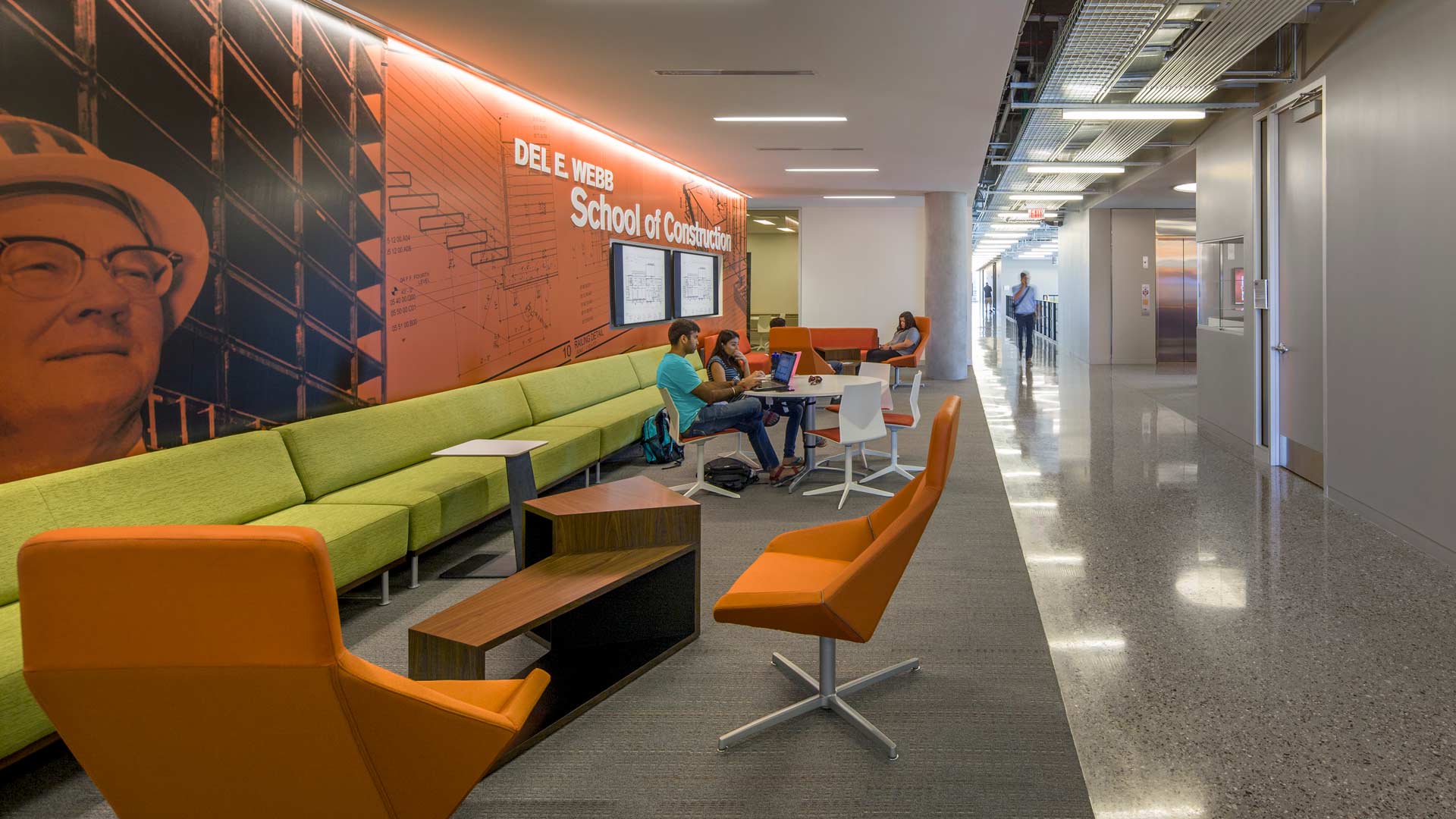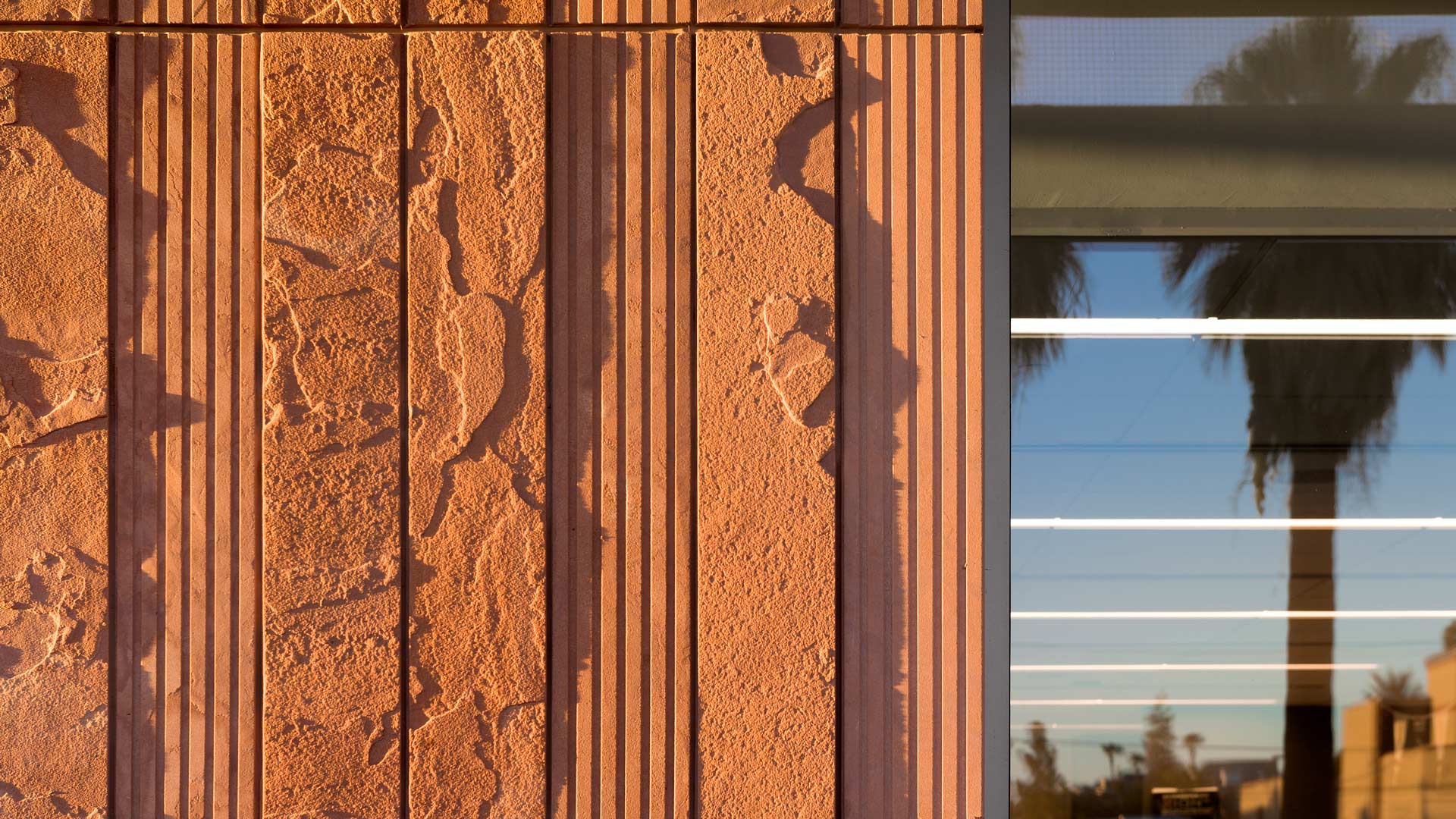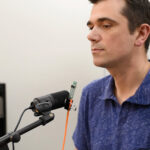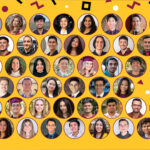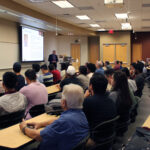
Engineering an identity
The College Avenue Commons has been home to ASU’s School of Sustainable Engineering and the Built Environment for 10 years

In the summer of 2014, the College Avenue Commons, or CAVC, building was unveiled on Arizona State University’s Tempe campus as the new home for the School of Sustainable Engineering and the Built Environment, part of the Ira A. Fulton Schools of Engineering at ASU.
Ten years later, CAVC has distinguished itself as the primary location for ASU football tailgate events, welcomes prospective ASU students at the Future Sun Devil Welcome Center, and has become ASU’s central location for programs in civil, environmental, sustainable and construction engineering and construction management.
Designed, contracted and constructed by ASU alumni, CAVC is an investment in and by the past, present and future of Sun Devil engineers.
Under one roof
The School of Sustainable Engineering and the Built Environment was formed in 2009 as part of the restructuring of the Fulton Schools to consolidate resources and increase interdisciplinary collaboration.
Matthew Eicher, the school’s assistant director, says its faculty members were scattered across seven buildings and two campuses before the building was constructed.
“Even though we were called one school, that wasn’t represented geographically until we moved into the College Avenue Commons,” Eicher says. “Having a marquee building for one of the nation’s best programs is a powerful symbol.”
They recruited an all-ASU alumni team, consisting of Sun Devils from Okland Construction and architecture firms Gensler and Architekton. Professor Emeritus Edd Gibson, the director of the School of Sustainable Engineering and the Built Environment at the time and former director of the Del E. Webb School of Construction within it, recalls the first day of construction for the project.
“The entire construction management team consisted of Del E. Webb graduates,” Gibson says. “They had brand-new hard hats and vests, and they had such big smiles. I think they felt an obligation to do a great job.”
Gibson credits the fundraising success to Mike Remedi, the head of development for the Fulton Schools during the CAVC construction process, and those in the Del E. Webb School of Construction for their roles in securing millions of dollars in needed funds.
“We had 82 separate donors for the building, so there were a lot of meetings and conversations,” Gibson says. “The day the Del E. Webb Foundation pledged $2 million toward the construction, we knew we were in good shape.”
Building a building for future builders
As a community of engineers, architects, educators and alumni, the Fulton Schools leadership team used its expertise to cultivate a space that could support and anticipate the university’s needs.
“We wanted a space that made students feel like they had a home,” Gibson says. “We wanted a sustainable building that deliberately mixed faculty, staff and students together. We wanted a space that showcased construction and design techniques for didactic learning, and finally, we wanted a space that was flexible into the future because we knew higher education would change throughout the years.”
The floor layouts were designed to have intuitive routes and walking pathways, with windows at the end of each hallway, bathrooms in the same location on each floor, academic advising located close to classrooms, and separate zones for classrooms and offices.
“Within five years after the building’s completion in 2014, the school’s enrollment had gone up by 50%, we’d doubled our faculty member count and more than doubled our research expenditures,” Gibson says. “The CAVC was very important in shaping the programs there today.”
The building is a manifestation of one of the Fulton Schools’ core tenets — to extend engineering education beyond the classroom. CAVC’s construction methodologies were designed to showcase building techniques.
“If you go into the fourth and fifth floor hallways and look up at the ceiling, you notice the electrical conduit and exactly the precision that it was built with,” says Allan Chasey, a Fulton Schools emeritus professor of construction engineering and former program chair in the Del E. Webb School of Construction. “The design is intended to show to students to say, ‘This is how it’s supposed to be done.’”
Chasey says the CAVC construction offered a rare educational opportunity for students.
“Some students graduated before the building was done, but those same students got to see the whole process,” he says. “We were able to take our students through at almost any given time so they could see what it’s like to build a building.”
Sticky spaces orchestrate organic collaboration
The school wanted a building that matched the faculty’s goals. The open layout and plethora of seating create an abundance of places for people to congregate and stick around, known as sticky spaces.
The sticky spaces support student development and social interactions. Having a physical space to gather and connect helps students establish roots in the engineering community.
“We knew there should be open space for students to interact and meet up before and after class to study,” Eicher says. “We just took that to the nth degree in this space, and if you walk around, you see it. Our students don’t have to camp out for a coffee shop table.”
Establishing communal, academic and industry spaces next to each other exposes students to potential paths ahead of them. Eicher says the space is planned for student spontaneity by placing opportunities strategically, noting that CAVC is one of the only affiliated buildings on campus that can house its career fairs and frequently hosts industry professionals. In 2023, CAVC hosted representatives from more than 150 companies at various events.
The building’s atrium is no exception. With stacks of bleacher-like seating, a large video wall and two-story, floor-to-ceiling windows that open to a conjoined patio, the atrium is a hotspot for events and congregating.
“We wanted a space that could have multiple uses, and it was much more successful than I expected,” Gibson says. “When we were at our former location, I hardly ever saw any students, but from the first day we opened the new building, students were using the spaces we designed for them.”
The open plan across the fourth and fifth floors encourages interaction and filters sunlight through the building, creating a welcoming atmosphere to diminish isolation.
“We wanted to make sure no one could hide,” Eicher jokes. “I can be on the third floor and wave to someone on the fifth. A big part of the design is being recognized, accepted and accessible within this community. It’s another way we build those great chance interactions.”
Cementing future opportunities
Design choices in CAVC have set the standard for many of the new buildings springing up across ASU’s campuses, from office sizes to the inclusion of skateboard racks and atriums.
Gibson says beyond ASU, CAVC features such as multi-story atriums, desert-inspired architecture, locally quarried rock and treatments that consider and account for an abundance of sunlight have become more popular in the Phoenix area’s architecture over the last decade.
While welcoming a new era of architectural design to ASU, the School of Sustainable Engineering and the Built Environment has transitioned into a new educational era with additional degree programs to prepare students for careers creating the built environment. CAVC is the flagship location for keeping learners in the field engaged to develop interdisciplinary skills and connections.
Ram Pendyala, the current director of the School of Sustainable Engineering and the Built Environment, acknowledges and appreciates the efforts of those who shaped the school to what it is today.
“College Avenue Commons provides a sense of place for scholars, staff, and students to come together in the pursuit of a common vision: to create resilient and thriving communities of tomorrow,” Pendyala says. “We stand on the shoulders of giants whose dedication and contributions have transformed this vision into a tangible reality, shaping a place where ideas flourish and futures are forged.”
The CAVC received critical acclaim for its design and development, including these awards:
- Environmental Excellence Award by Arizona Forward.
- 2015 Goodwin Award from the American Institute of Architects Arizona.
- 2016 Salt River Project Sustainable Award by the American Institute of Architects Arizona.
- Best Higher Education Project by Arizona Real Estate and Development.
- 2015 Best Higher Education/Research Project by Engineering News Record.
- 2015 Design Excellence Merit Award by the American Institute of Architects.
- 2015 Distinguished Building – Merit Award by the American Institute of Architects.
- Gold Leadership in Energy & Environmental Design, or LEED, by the U.S. Green Building Council.
The building houses community-focused resources such as Construction in Indian Country, a committee that supports construction projects on tribal lands, and an OSHA Education Center, which educates thousands of employees about health and safety across the Southwest.






